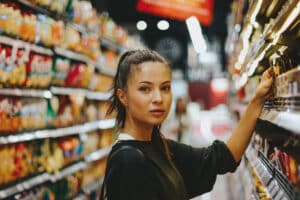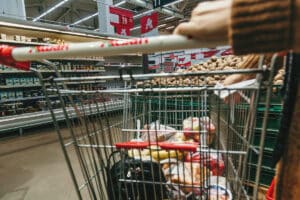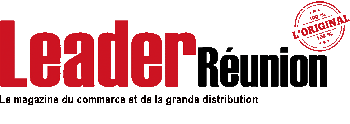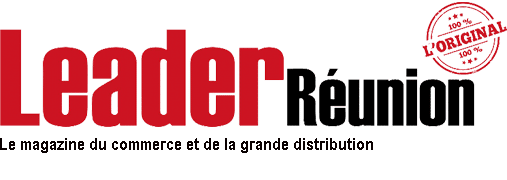The NielsenIQ Institute has just presented its annual conjectures, summarizing the developments in mass consumption in 2022 to envisage the 2023 financial year.
Inflation is the buzzword of this year 2022. According to NielsenIQ, rising prices are the major concern of 77% of French people questioned during the institute's latest survey. Then comes global warming (63 %), the conflict in Ukraine (53 %) and the health crisis (31 %). France has never experienced such a level of inflation since 1984. If the country is not spared, with an increase in the average price of consumer products of 10,4% between December 2021 and December 2022, our European neighbors are no less impacted : inflation hits 13,3% in Germany, 13,7% in Italy, and even 18,6% in Poland. Beyond, the United States is experiencing an evolution of 13,9% when Turkey (121,6 %) and Argentina (104 %) break all records. In France, according to NielsenIQ, inflation is expected to continue until summer 2023 before stabilizing. Result : an additional cost for French households who had to spend an additional 280 euros to fill their shopping cart with consumer products (PGC). This additional cost could even almost triple compared to 2021 and reach 790 euros in 2023, based on NielsenIQ assumptions.
Arbitration between expenses
In 2022, the French have adapted to limit the effects of inflation on their purchasing power by avoiding food waste (62 %), by reducing their fuel costs (55 %), by limiting clothing expenses (51 %) or leisure (50 %). They arbitrate and reduce their purchases, particularly in maintenance (-27 %), hygiene, beauty (-25 %), frozen (-12 %) and alcohols (-9 %, percentage which goes up to -12,6% for low-income households), with a lower propensity for storage. Even if the volumes resist, the descent, which consists of favoring less expensive products for the same need, is also a trend observed by NielsenIQ in 2022. Result : 62% of the drop in volumes of national brands occurs towards distributor brands (MDD) which are developing more quickly among the middle classes. Private label is also gaining ground throughout Europe.
Millions of households under pressure
NielsenIQ estimates the number of French households “weakened” by inflation at 13 million, up more than 25 points compared to December 2021. To these, we must add the three million “constrained” households who already had limited purchasing power even before the return of inflation. It is especially young adults and families who have reduced their food spending the most, the former having found their way back to out-of-home consumption over the first half of the year. And in 2023, according to NielsenIQ, one in four French people think about reducing their food expenses. Conversely, Coca-Cola is number one in the top 10 manufacturers having generated the most additional turnover in 2022, with 194 million euros. Next come P&G (159 million euros), Lactalis (129 million euros), Wisdom (118 million euros), Suntory (107 million euros), Nestlé (95 million euros), etc.

In 2022, to save money on their everyday products, 49% of French people paid more attention to price comparisons, 48% sought to purchase products on promotion or products at a reduced price due to their near expiration date (43 %). More restrictive, 39% of people surveyed say they have consumed less meat or fish in 2022. 34% have changed their habits by forcing themselves to make a shopping list, and the same proportion declares having reduced their pleasure purchases (vin, chocolat). French consumption was also affected by major disruptions in shelves. The rupture rate in value reached 5,3% in December 2022 (compared to December 2021), 25% of these product availability disruptions are linked to widespread upstream causes. According to the NielsenIQ report, the fragmentation of purchases continues, with smaller baskets and increased purchasing frequency for better control of expenses.
Large distribution : how the actors stood out
Consumer goods players, signs and brands, compensated for product inflation by implementing numerous promotions. The weight of promotions in turnover thus reached records in 2022 with a rate of 21,7 %.

Consumption and eating habits are changing

Far from any overconsumption, the quest for pleasure remains essential in times of crisis, because despite economic difficulties the French remain reluctant to reduce their pleasure consumption.
The recent success of the GO Bubble Tea range, best launch of the year, is a perfect example. Brands are also innovating in this direction, more, due to the current crisis, the weight of innovation in FMCG turnover continues its slow erosion : 2,1% in 2022 versus 2,2% in 2021 and 2020. In cause, a lower number of launches this year. Another observation : nearly one in four French people do not cook, a trend that has accelerated since 2021. 21,6% of French people are fans of “quickly done” and never cook. According to the NielsenIQ report, snacking between meals continues to increase. As a need to compensate for the proven disorganization of meals, especially among young people, snacking in the morning and evening increase by three points respectively. Reaching these young generations who are the consumers of tomorrow is therefore a real challenge for manufacturers and distributors., whether in the way of communicating or in the product proposition.
Local purchasing and packaging become major issues
In terms of food, starchy foods remain a safe bet for the French, in front of vegetables and meat. Nearly eight out of ten consumers say they attach importance to nutrition and 50% pay attention to the Nutri-Score of the products they buy. The NielsenIQ report unsurprisingly reveals that sales of organic products in mass distribution decreased in 2022. Price accessibility and reduction in assortments explain this decline. However, alternative consumption increased in 2022 (+ 6,1% change in unit sales), in particular that of pesticide-free products, natural, without preservatives or alcohol. The desire to consume responsibly is therefore gradually making its nest in the minds of consumers. 60% of French people say that it is “something important for society” and that they try to make sustainable choices when they can.. Pour 24 %, it’s even a daily priority. The results of the NielsenIQ survey also confirm that local purchasing and packaging are two issues that will play a major role in the years to come..












